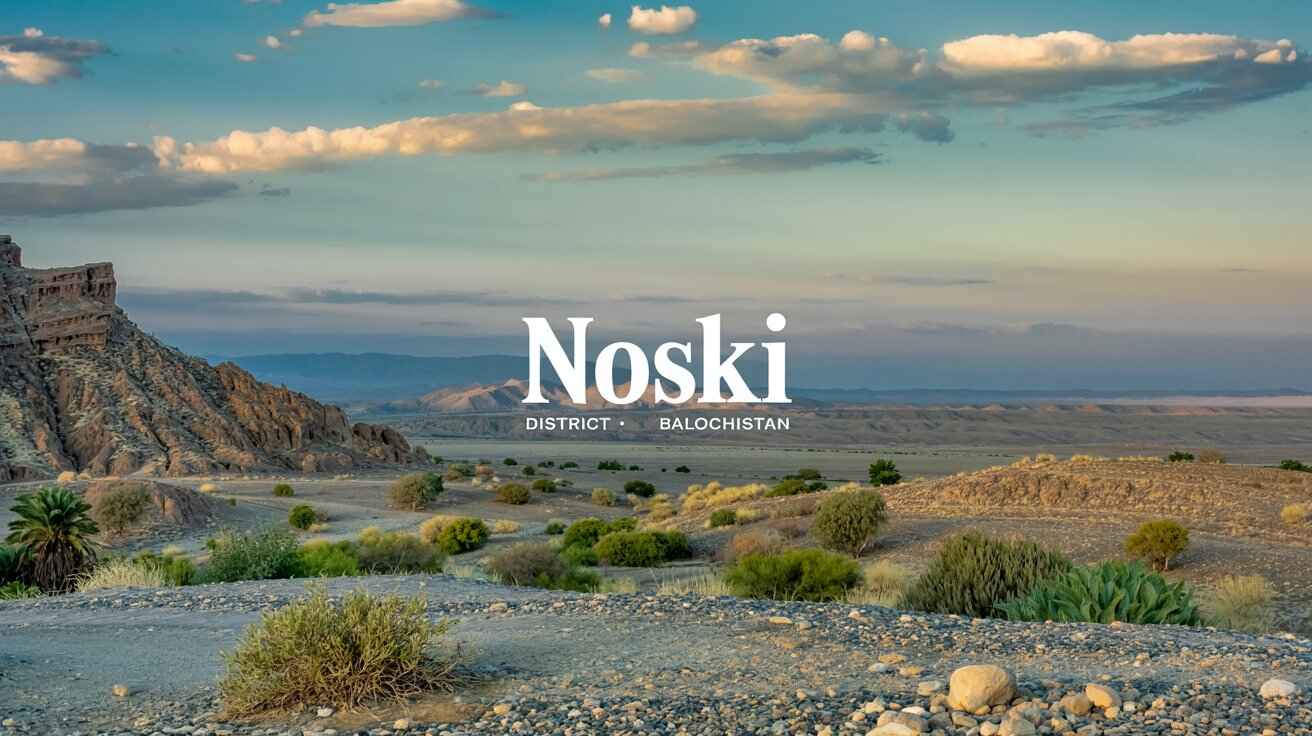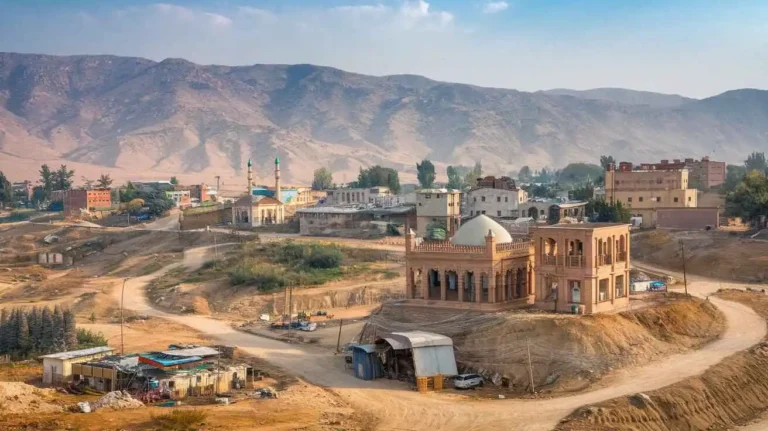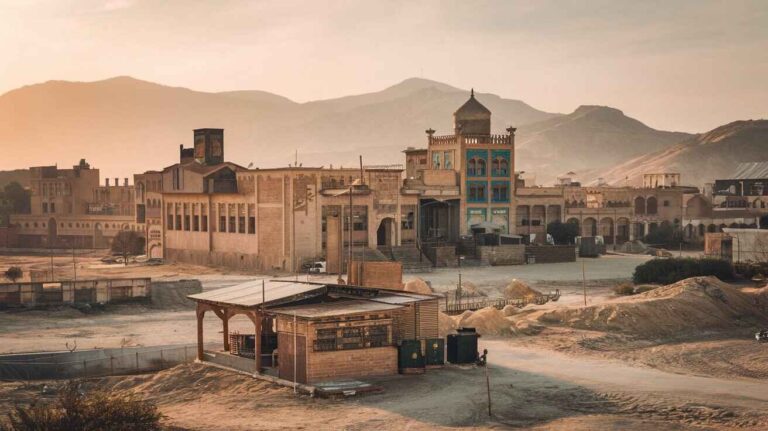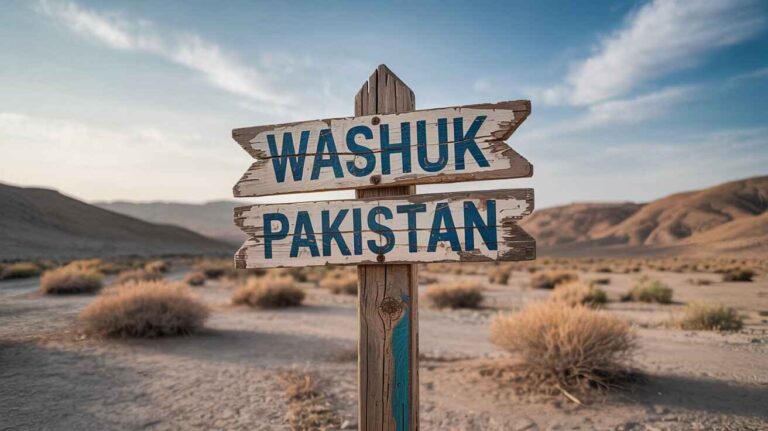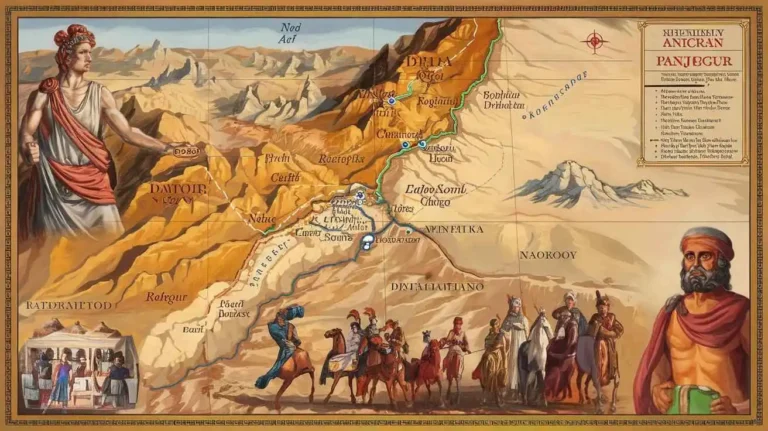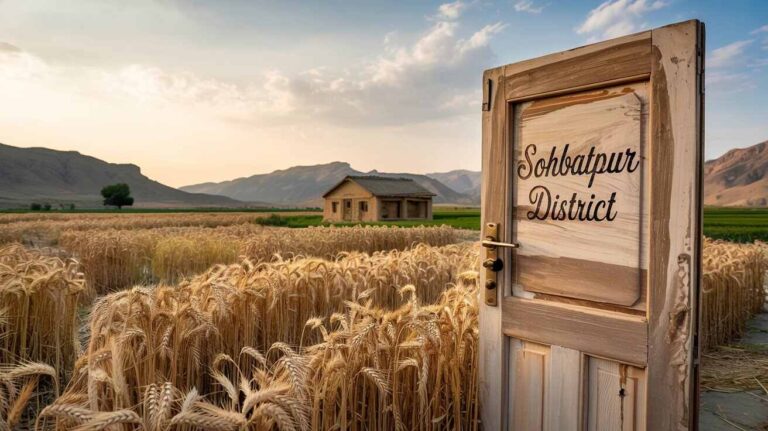Noshki: The Hidden Gem of Balochistan
Noshki Balochistan
Nestled in the heart of Balochistan, Noshki is a district that often goes unnoticed in discussions about the region, yet it holds great significance both geographically and culturally. Located at 29°01’51” to 29°52’37” North latitudes and 65°07’42” to 66°18’45” East longitudes, Noshki is a semi-arid area that stands as a testament to resilience against the forces of nature. The district lies within the Dry Western Plateau and is classified as part of the Desert sub-region of Balochistan. With an area of 5,797 square kilometers, Noshki is surrounded by districts such as Chagai, Kalat, Mastung, and Kharan to the south and west, while it shares its northeastern border with Afghanistan.
A Glimpse of Noshki’s Geography
The geographical location of Noshki is integral to understanding its weather patterns and socio-economic life. The district lies within a region known for its low rainfall, which averages around 124 mm annually. This erratic rainfall plays a key role in shaping the livelihoods of the people. Noshki‘s semi-arid land profile presents challenges such as frequent droughts and dust storms, both of which significantly impact local agriculture and livestock production. The district falls within the broader ecological zone of Balochistan, which is characterized by an extreme climate with scorching summers and cold winters. The Sarlath hill range and Raig to the north provide a natural boundary to the region, while the Helmand River of Afghanistan lies to the northeast, marking the regional divide.
The terrain varies from sand dunes and interdunal plains to alluvial plains like Kachingi, known for its fertile land. These features are crucial for local agriculture, although it is often challenged by the desertification processes and water scarcity in the region.
The People of Noshki: A Hardworking and Resilient Community
Noshki is home to a population of around 178,796 persons, as per the latest census. The district has a low population density, with only 30.7 persons per km², reflecting the sparsely populated nature of the area. Despite the challenges posed by semi-arid conditions, the people of Noshki have a rich history of livelihood centered around agriculture and livestock production.
The main economic activity in Noshki revolves around the cultivation of crops such as wheat, barley, maize, cotton, and a variety of fruits like apricots, peaches, grapes, pomegranates, and dates. These crops are often grown in the fertile plains and under irrigation systems such as tube wells, wells, and flood water irrigation techniques. The district also thrives on livestock breeding, with sheep, goats, camels, and buffaloes being common livestock. Fishing, although not as prominent as agriculture and livestock, also plays a role in local livelihoods, particularly around Zangi Nawar Lake and Khanuwaal Lake.
However, these traditional forms of livelihood face considerable threats due to climatic factors. In recent years, drought has become a recurring phenomenon, greatly affecting the economic stability of the district. The 1998-2004 drought was particularly devastating, as it led to the loss of crops and forced many families to sell livestock in an attempt to survive.
The Struggles and Coping Strategies of the People
The residents of Noshki have developed several coping strategies to deal with the challenges of living in a drought-prone and semi-arid environment. Primary data collected through a questionnaire survey of 198 respondents in various union councils such as Daak, Anam Bostan, and Kishingi revealed that migration to neighboring countries like Iran for daily wage labor is a common survival strategy. Many households also engage in illegal smuggling of goods across the Afghanistan border to make ends meet. Moreover, alternative sources of income such as beekeeping, poultry farming, and handicrafts—like baskets and mats made from Mazri plant fibers—provide an additional means of livelihood.
Interestingly, livestock production and sales, especially of sheep and goats, remain central to Noshki’s economy. However, the forced sale of livestock during times of financial strain is a common practice, often triggered by unfavorable market conditions and poor livestock health due to limited water and pasture resources. These economic decisions are deeply influenced by climatic conditions and financial abilities of households, which is why many families remain vulnerable.
The Importance of Community Support and Government Initiatives
Community support plays a crucial role in helping households navigate the tough times brought on by droughts and famine. Local initiatives like the establishment of veterinary mobile camps by the livestock department and drought mitigation measures such as open ponds for water storage have helped alleviate some of the challenges. The government’s involvement in drought risk management through the baseline survey and support for livestock in the form of veterinary care and subsidized feed has also been valuable.
However, mismanagement of resources and water exploitation remain significant barriers to the district’s long-term sustainability. The over-extraction of groundwater and poor management of irrigation systems often exacerbates the problem of desertification, making the region even more vulnerable to climatic fluctuations.
Flora and Fauna of Noshki: A Unique Biodiversity
One of the lesser-known aspects of Noshki is its rich biodiversity, despite the harsh climatic conditions. The flora of the region includes hardy plants such as wild pistachios, turpentine tree, Tamarix macrocarpa, and Pistacia terebinthus, which have adapted well to the dry tropical forest conditions of the area. These plants play an important role in preventing soil erosion and providing some degree of cover for grazing animals.
The fauna of Noshki is equally diverse. Notable species include the desert fox, goitered gazelle, houbara bustard, and pygmy jerboa, all of which are well-adapted to the dry conditions of the Balochistan desert. The Zangi Nawar Game Reserve and surrounding areas also provide sanctuary to several endangered species, contributing to the preservation of biodiversity in an otherwise harsh environment.
History of Nushki: A Historical Journey Through Time
Nushki, a town in Balochistan, has a rich and diverse history that spans centuries. It has seen the rise and fall of numerous empires, invasions, and the coming together of different cultures. The town’s story is one of survival, resilience, and transformation, which has shaped its current identity. Located in Chagai District, Nushki is strategically placed near the Afghan-Iran border, serving as a gateway for the westward route from Central Asia to the broader region of South Asia. This article delves deep into the evolution of Nushki, from its early historical importance to its role in contemporary geopolitical dynamics.
The Early History: From the Mughals to the Safavids
The history of Nushki can be traced back to the 16th century when it was under the influence of major powers such as the Mughal Empire and the Safavid Dynasty. During this period, the region was primarily governed by the local rulers, who were significantly influenced by the Brahvi and Baloch tribes.
In the early 16th century, the Mughal Emperor Humayun had interests in consolidating his empire, particularly in Seistan and surrounding regions. The Helmand valley, which also touches parts of modern-day Nushki, was strategically important as it was a vital route for the expansion of Mughal power into the heart of Central Asia. However, the political landscape was far from stable, with multiple forces vying for dominance.
Around 1543, Nadir Shah of the Ghilzai Dynasty led military campaigns in the region, which also affected the town of Nushki. This period marked a significant turning point as the region became a key part of the struggles between the Safavid Dynasty in Persia and other Central Asian rulers, including the Mughal and Afghan forces. Seistan, a region closely associated with Nushki, saw fluctuating control as the Persians and Afghans contended for supremacy.
The Rise of Local Baloch Rulers: The Khanate of Kalat
By the early 18th century, the region that is now Nushki became a contested space between local tribes and larger empires. In 1716, the Khan of Kalat, Mir Abdullah Khan, was an influential figure in the region, helping to solidify the power of the Baloch tribes. Nushki, like much of the surrounding Chagai district, became part of the Kalat State, a semi-autonomous Baloch principality. This period of local governance saw the rise of figures like Mir Nasir Khan, the Brahvi ruler of Kalat, who played a crucial role in defining the socio-political landscape of the area.
During this time, Nushki was heavily influenced by its strategic location along important trade routes leading to Persia and Afghanistan. The town’s proximity to the Bolan Pass, a major historical trade route, made it a crucial point for merchants and travelers heading toward the Indian subcontinent and beyond. The Brahvis, who were native to the region, were known for their role in managing these vital trade routes.
The British Era: Nushki and the Great Game
The historical importance of Nushki continued to grow during the era of British colonial expansion. The British Empire had its eyes set on controlling the vast territories in India, and the Great Game played out in the areas around Nushki. The British, along with their colonial interests, began to exert influence over Balochistan, including the region around Nushki.
In 1810, British officials such as Captain Charles Christie and Lieutenant Henry Pottinger ventured into the area, mapping out the landscape and assessing its strategic importance. Lieutenant Pottinger, in particular, is known for his travels across Central Asia, especially his reports on the political and geographical landscape of regions such as Herat and Isfahan. Pottinger’s journey extended over 2,412 miles, showcasing the immense scale of exploration during the time.
As British interests grew, Nushki found itself at the crossroads of international diplomacy and trade. During the British colonial era, the Baloch tribes of the region came under British influence, and the town became part of British-controlled Balochistan. British officials, keen on asserting dominance over the Afghan-Iran border, found Nushki’s location valuable for maintaining surveillance and control.
The Nineteenth Century: Boundary Demarcations and Changing Politics
By the late 19th century, the region around Nushki witnessed significant changes in its political landscape. The British Government officially established a political presence in the region in 1896. The boundaries of Balochistan were clearly demarcated during this time, with the joint Afghan-British Commission working toward solidifying the borders of the region. The Afghan Baloch boundary became a topic of significant discussion as the British sought to finalize the division of land between Persia, Afghanistan, and India. The Nushki region, being part of Chagai, was important for this boundary process.
In 1899, the British extended their jurisdiction over Nushki, controlling civil and criminal matters, including the collection of tolls. Rs. 9,000 was the fee set for administrative control, a reflection of how the region’s significance was being recognized by the colonial powers. This continued until the Independence of India in 1947, when the boundaries of Pakistan and India were redrawn, impacting the geopolitical dynamics in Balochistan.
Post-Independence: The Modern Era of Nushki
The Independence of Pakistan in 1947 brought new challenges and opportunities for Nushki. The region’s status remained intricately linked to the political developments of both Pakistan and its neighboring countries. The northern boundary of Nushki, particularly its proximity to Afghanistan, continued to be of strategic importance. The establishment of the Pakistan-Iran Commission in 1959 further emphasized the importance of this region, especially as Pakistan sought to solidify its position within the broader geopolitical framework.
In 1970, the creation of Balochistan as a province within Pakistan reshaped the political landscape. Nushki was incorporated into the Quetta Division, and its importance continued to grow as a key administrative center. The subsequent decades saw the town’s development, culminating in its upgrade to district level in 2004. This upgrade brought with it the establishment of a District Council, and the creation of various Union Councils to ensure local governance. The Local Government Act of 2010 brought further reforms, with Nushki now having representation in the National Assembly and Provincial Assembly.
Nushki’s Development: From Ancient Forts to Modern Infrastructure
Today, Nushki stands as a vibrant town, with remnants of its historical past intertwined with the modern administrative framework. The Fort of Nushki, a significant historical landmark, still stands as a symbol of the region’s strategic importance. The Shrine of Sher Jan Agha also adds to the town’s cultural and historical heritage.
The town’s historical significance is not limited to its military and political past. Archaeological sites such as Zangi Nawar and Khanuwaal provide a window into the rich cultural tapestry of the region. These sites are reminders of the diverse civilizations that have left their mark on Nushki throughout history.
The Nushki District Development Profile of 2011 highlighted significant progress in areas such as infrastructure, education, and healthcare. With a population of 5,797 km² and 10 Union Councils, the district has seen a steady improvement in local governance and services. Women, workers, and peasants make up a significant portion of the district’s workforce, with 33% of the population engaged in agriculture and labor.
In the present day, Nushki continues to be a hub of development. Its elevation of 914 meters (approximately 3,000 feet) above sea level makes it a unique part of Balochistan’s geographical landscape. The historical importance of Nushki has given rise to a town that balances tradition and modernity, with its roots firmly planted in the diverse history that shaped it.
Famous Personalities from Noshki
Mir Hazar Khan Khoso
Mir Hazar Khan Khoso is one of the most prominent political figures from the Noshki region, whose contributions to the politics of Balochistan have left a lasting legacy. Born into a respected family of political leaders, Mir Hazar Khan Khoso’s journey in public service is marked by his tireless dedication to the people of Balochistan. His name resonates particularly in the context of his tenure as the caretaker Chief Minister of Balochistan in 2013, during a period of political uncertainty and unrest.
In 2013, when the provincial government was dissolved, Khoso was appointed as the caretaker chief minister to ensure the holding of free and fair elections. His leadership was vital during this transition, ensuring stability in the region and overseeing the electoral process. His ability to maintain neutrality and address the concerns of various political factions during this time was widely appreciated. Mir Hazar Khan Khoso’s contributions were not limited to this brief period. Throughout his career, he worked relentlessly to improve the governance and development of Balochistan, advocating for peace and justice. His impact on local politics, especially in Noshki, is still evident today, as many consider him a guiding figure for political fairness and integrity in the region.
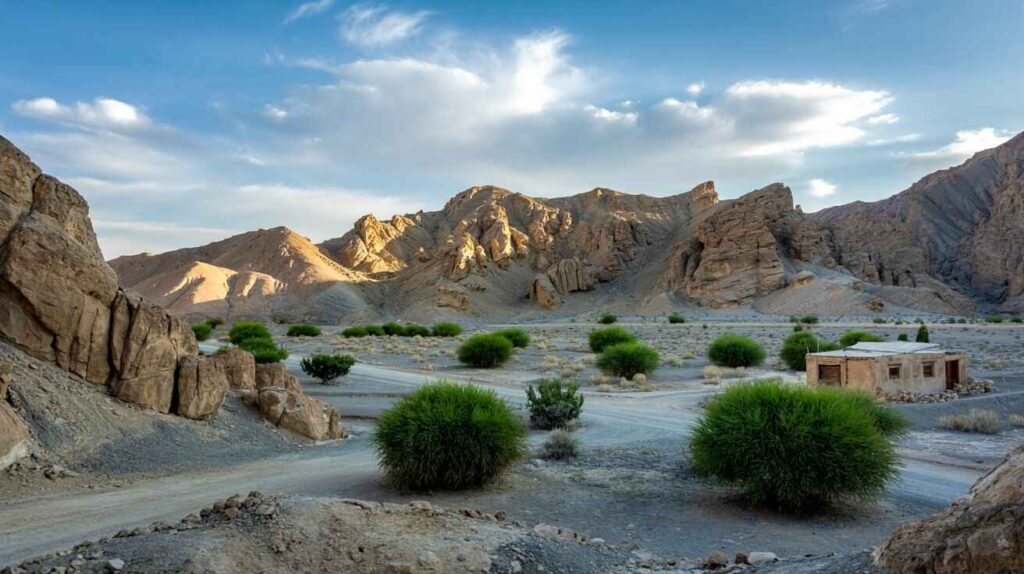
Sardar Ataullah Khan Mengal
Though Sardar Ataullah Khan Mengal hailed from the neighboring region of Khuzdar, his influence extended far beyond his birthplace, making a significant impact on the political and social landscape of Noshki and the entire Balochistan province. He was one of the key figures in Baloch politics, widely respected for his leadership and advocacy for Baloch rights.
Sardar Mengal’s most notable political position was as the Chief Minister of Balochistan in the early 1970s. His tenure was marked by his passionate efforts to promote the rights of the Baloch people, advocating for greater autonomy for Balochistan within Pakistan. As a leader of the Balochistan National Party, Sardar Ataullah Khan Mengal played a pivotal role in shaping the political narrative of the province, demanding political, economic, and social justice for the Baloch community.
Despite facing many challenges and opposition, including his time in political exile, his legacy is still revered in Balochistan. His advocacy for Balochistan’s autonomy and the rights of its people, along with his unwavering stance on socio-political issues, earned him a lasting place in the history of Balochistan’s struggle for rights and self-determination. His influence continues to resonate in Noshki, where his political vision inspired many local leaders to pursue Baloch political rights.
Mir Hazar Khan Rind
Mir Hazar Khan Rind was another influential figure in the political history of Noshki and Balochistan at large. He is remembered as one of the leading lights of the Baloch nationalist movement in the 20th century. A respected leader from the Rind tribe, Mir Hazar Khan Rind played a crucial role in the political affairs of Balochistan, especially during a time when the province was facing significant socio-political turmoil.
Rind was known for his strong leadership qualities and his commitment to the rights of the Baloch people. His impact on Noshki’s political landscape was profound, with his vision for the future of Balochistan shaping the direction of Baloch nationalist thought. He worked tirelessly to improve the conditions of Balochistan’s people, advocating for political autonomy, socio-economic development, and cultural preservation.
Through his leadership, Mir Hazar Khan Rind contributed greatly to the discourse on Baloch rights, both within Balochistan and on the national stage. His influence on the politics of Noshki and the surrounding areas helped shape the path of Baloch political movements and remains a source of inspiration for current political leaders and activists in the region.
Famous Places in Noshki
Noshki Fort (Qila)
The Noshki Fort (also known as Qila) is a historic landmark that stands as a testament to the region’s rich history and strategic significance. Located on the outskirts of Noshki, this ancient fort was originally built as a military stronghold to defend the region against invaders. The fort’s strategic location, overlooking the vast desert landscape, provided a perfect vantage point for monitoring enemy movements and ensuring the safety of the inhabitants.
Over the centuries, Noshki Fort has seen various phases of use, from military fortification to a symbol of regional power. Today, it stands as a popular historical site, drawing tourists and historians alike who are eager to explore its architectural features and learn about its role in the history of Balochistan. The fort is an important symbol of Noshki’s resilience and its long-standing history of defending its borders from external threats. Visitors to Noshki often take the opportunity to visit the fort, which also serves as a reminder of the strategic significance of this region.
Balochistan Desert (Rohi)
The vast Balochistan Desert, or Rohi, surrounds Noshki and is an iconic part of the region’s landscape. The desert stretches over miles of barren terrain, offering a stark contrast to the lush green areas of other parts of Pakistan. The desert is sparsely populated, but it is home to a unique ecosystem, including wildlife adapted to the harsh conditions of the region.
The desert offers significant beauty, with its shifting sand dunes and endless horizons, making it a favorite spot for photographers and environmental enthusiasts. Its unique landscape also holds cultural and historical significance, as many local tribes have lived in the desert for centuries, developing their own way of life that revolves around the challenges posed by the harsh environment. The desert region of Noshki is a key point of interest for anyone visiting Balochistan, with its rugged beauty and significance for local nomadic communities.
Mastung Road
The Mastung Road, which connects Noshki to Mastung and other key parts of Balochistan, is an essential transportation route in the province. This road not only plays a critical role in connecting various regions but also offers some of the most striking views of Balochistan’s diverse landscapes, including rocky hills, desert plains, and valleys. The road is vital for trade, transport, and the movement of goods between regions, contributing to the local economy.
Travelers and tourists passing through Mastung Road can appreciate the natural beauty of Balochistan, while also witnessing the ruggedness and resilience of the people living in this arid and harsh terrain. The road’s connection to larger trade routes makes it an important part of the region’s infrastructure.
The Hills of Noshki
The hills of Noshki offer a scenic and challenging landscape for outdoor enthusiasts, trekkers, and nature lovers. The hills around Noshki are characterized by their rocky terrain and steep slopes, making them ideal for those interested in hiking and exploring the natural beauty of Balochistan. The area is known for its pristine environment, with rare flora and fauna found in the surrounding mountains and valleys.
These hills provide a unique escape from the otherwise barren desert, offering peaceful retreats and panoramic views of the surrounding landscape. They also hold cultural and historical significance, as they have been home to various Baloch tribes for centuries. The hills of Noshki are an important natural resource for local communities and provide opportunities for research and tourism development.
The Noshki Bazaar (Market)
The Noshki Bazaar (or market) is the heart of the town, serving as a bustling hub for local trade and commerce. Located at the center of the town, the market is where locals gather to buy and sell a wide variety of goods, from agricultural products to livestock and handicrafts. The bazaar is an important part of the town’s social fabric, reflecting the vibrant culture and economic activities of the region.
In the market, visitors can find traditional Balochi crafts, including woven rugs, jewelry, and pottery, all representing the rich heritage of the Baloch people. The bazaar also serves as a place for social gatherings, where the community comes together to discuss local issues and share news. For tourists, the Noshki Bazaar offers an authentic taste of Balochistan’s culture and is an excellent spot to engage with the local community and learn about the region’s traditions and way of life.
Together, these personalities and places form an integral part of Noshki’s identity, contributing to its political, cultural, and historical significance in the broader context of Balochistan.
Challenges of Infrastructure and Services
Despite its rich natural resources and agricultural potential, Noshki faces significant challenges in terms of economic infrastructure. The district has a low road density, and black topped roads are limited to only 1,080 km. This affects the mobility of goods, services, and people. The RCD Highway is the main road that connects Noshki to Quetta, but access to more remote areas remains a challenge.
Telecommunications are another area that requires significant improvement. The district has only a few landline and broadband connections, and cellular services are intermittent. Similarly, electricity is provided by the Quetta Electric Supply Company, but power shortages are common, affecting both households and businesses.
Educational opportunities in Noshki are also limited. While there are numerous primary and secondary schools, access to higher education is restricted, with only a single degree college available. The lack of vocational training schools further limits the ability of residents to develop skills for alternative sources of income.
The Future of Noshki
Looking ahead, Noshki faces both challenges and opportunities. The government and local organizations must continue to implement strategies for drought mitigation, water conservation, and agriculture diversification. Additionally, improving infrastructure—such as roads, telecommunications, and electricity supply—is vital for enhancing the overall quality of life in the district.
As climatic and socio-economic conditions continue to evolve, Noshki will need to adapt its traditional livelihood practices and integrate more sustainable agricultural techniques and resource management strategies. The active involvement of local communities, in collaboration with government and non-governmental organizations, will be key to ensuring that Noshki thrives in the face of future challenges.

